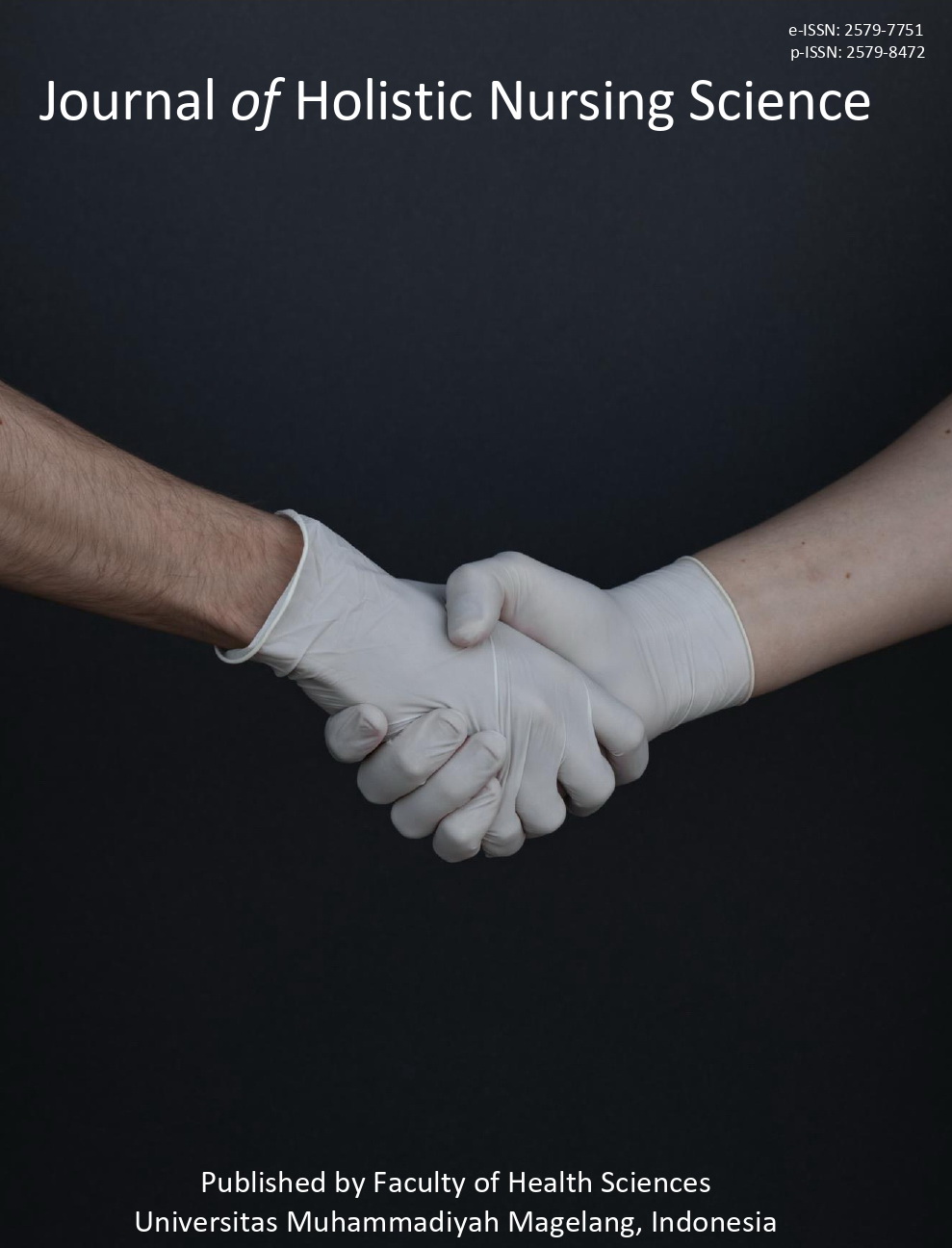FAKTOR-FAKTOR YANG BERHUBUNGAN DENGAN KEJADIAN RUPTUR PERINEUM SPONTAN DI BPM NY. NATALIA KECAMATAN GENUK KOTA SEMARANG
Main Article Content
Abstract
Background: Postpartum hemorrhage is the main cause of 40% of maternal deaths in Indonesia, one of which is caused by rupture perineum. Based on the preliminary studies on women giving birth in Ny. Natalia Maternity Hospital in Genuk district of Semarang, from 110 respondents, 75 cases (68%) experienced a spontaneous rupture perineum. The aim of the study is to determine the relationship of age, parity and birth weight with spontaneous perineal rupture in Ny. Natalia Maternity Hospital in Genuk district of Semarang. Methods: This study is a quantitative study by using analytical survey design. The sample used is 32 respondents of women giving birth in Ny. Natalia Maternity Hospital in Genuk district of Semarang, by using accidental sampling technique. The statistical test used was Chi-Square test with p = 0.05. Results: From the analysis of the age variable, the p value ≥ 0.05 (p = 0.467) it means that Ho was accepted while Ha was rejected, the analysis result of parity variable, the p value ≤ 0.05 (p = 0.005) it means that Ho was rejected while Ha was accepted, while the variable of birth weight ≥ p value of 0.05 (p = 0.049) it means that Ho was rejected while Ha was accepted. Conclusion: There is a relationship between parity and birth weight with spontaneous rupture perineum and there is no relationship between age and the incidence of spontaneous rupture perineum. However, the results of this study are limited to the subject of studies which were conducted on women giving birth in private practice midwife Ny. Natalia in Genuk district of Semarang.
Downloads
Article Details
Authors who publish their articles in JHNS retain full copyright of their work. JHNS does not require authors to transfer their copyright to the journal or Universitas Muhammadiyah Magelang as the publisher. The authors grant JHNS a license for the first publication.
